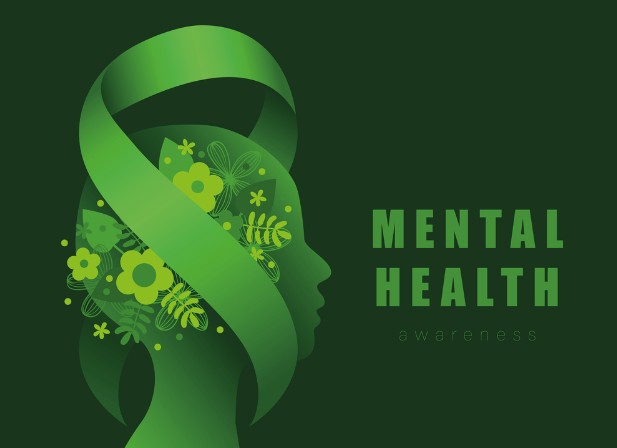7 Mental Health Awareness Symbols and Their Meaning
Mental health awareness symbols / image from Depositphotos
In the 20th century, mental health was a taboo subject. Signs of depression, neuroses, and attention deficit syndrome were often dismissed as mere laziness. Luckily, things have changed over the past 50 years. Nowadays, more people are reaching out for psychological help and aren’t afraid to discuss their challenges.
In this article, you’ll discover the main symbols of mental health, their history, and interpretations. Keep reading to grasp the importance of paying attention to your mental well-being.
Mental health symbol tattoo ideas
As per the World Health Organization, around 280 million people worldwide—making up 3.8% of the population—deal with depression. Moreover, each year, over 700,000 people take their own lives. This alarming statistic proves once again the importance of mental health care and seeking professional psychological help in difficult life situations.
If you’ve navigated through mental health challenges, expressing your journey through a symbolic tattoo can be a meaningful and personal way to honor your resilience and growth.
FAQ: What tattoo symbolizes mental health?
Since everyone has their own interpretation of mental health, there’s no universal tattoo idea that can convey your unique vision. Nevertheless, the most popular symbol is the semicolon. It is literally interpreted as “This is not the end yet.”
#1 Semicolon
The semicolon (;) serves as the universal symbol for mental health. When someone is going through a tough time, it might feel like their life is falling apart, and ending it could seem like the only option. The beauty of the semicolon symbol is that, even amid life’s struggles, there’s always a place for new beginnings and discoveries.
#2 Butterfly
Just like butterflies go through a stunning transformation from caterpillars, so can every person undergo a metamorphosis. Moreover, these graceful creatures always gravitate towards the light. A butterfly tattoo is an excellent way to show that, despite challenges, a person can find their way.
Butterfly tattoo as mental health symbol
#3 Lotus
The lotus serves as a powerful traditional symbol of harmony in Buddhism. This flower emerges from murky swamp waters but never ceases to delight the eye with its beauty. It’s a reminder that peacefulness can be found even in the most obscured environments. The lotus is one of the popular mental health flower symbols.
FAQ: What flower is associated with mental health?
Every flower carries its unique meaning, and since people deal with diverse mental problems, various plants hold special importance. For example, scorpion grasses or forget-me-not flowers are beautiful symbols that signify memory and the crucial role of support.
#4 Tree of Life
The Tree of Life is a mythological symbol found in various cultures. In ancient China, there was a belief that once every three thousand years, a peach would blossom on it, granting immortality. The Tree of Life signifies resilience, personal growth, and the enduring essence of life. It’s a strong reminder to keep going and not give up.
#5 Open lock
Dealing with mental issues might make it feel like all the doors in the world are closed. But that’s not true. When people openly acknowledge their struggles and are ready to embrace psychological help, those doors start to open for them.
#6 Sunflower
This amazing flower always turns towards the sun; such consistent orientation is a metaphor for the human instinct to gravitate towards positivity and personal growth. Overall, the sunflower symbolizes resilience and faith in the future, holding a profound significance for individuals grappling with mental illnesses.
Sunflower as mental health awareness symbol
#7 Puzzle piece
The puzzle piece represents the intricate and multifaceted nature of women’s and men’s mental health challenges associated with autism spectrum disorder (ASD). However, it is also broadly used to represent mental health in general. In a puzzle, each piece contributes to the bigger picture; the same applies to mental well-being, where assembling the pieces represents the journey toward self-understanding, healing, and wholeness. Since each person’s mental health journey is unique, finding the right pieces to complete the picture may require patience, understanding, and empathy.
FAQ: What is the universal mental health symbol called?
The official symbol for mental health is the green ribbon. It signifies support and solidarity for people dealing with mental health challenges. The color green brings positive vibes of hope, growth, and renewal. These ribbons empower people to embrace and openly discuss their struggles without hesitation.
Why is a semicolon considered a mental health symbol?
The story of this mental health symbol began in 2013 with Project Semicolon. It encouraged people worldwide to get tattoos as a way to show support for individuals dealing with mental illnesses or grieving the loss of loved ones to suicide. Project Semicolon was launched by Amy Bleul as a tribute to her father.
While Project Semicolon doesn’t offer psychological support, its members aim to reduce suicide rates in the United States and bring hope to those fighting against depression and addiction.
Mental health symbols meaning
FAQ: What is the mental health bell?
The Mental Health Bell is an official symbol for Mental Health America (MHA). It’s a 300-pound bell that represents the unseen chains of misunderstanding holding back people with mental illnesses. The bell was forged from the chains used to restrain individuals in psychiatric institutions. It signifies hope and serves as a reminder that people facing mental health challenges often feel constrained by society’s lack of understanding.
Conclusion
Mental illness can be a difficult topic to discuss, but it’s one that needs to be talked about more openly. For many, having mental issues is a balancing act between appearance and reality, which can make it difficult to spot. For this reason, it’s important to raise awareness on the matter, let others know that they’re not alone, and normalize speaking up and seeking help.



















